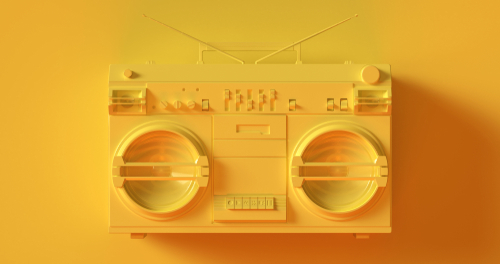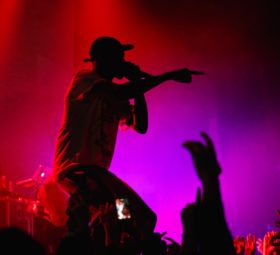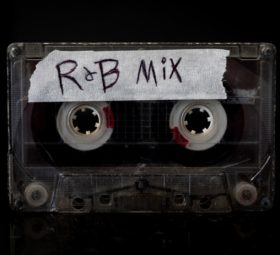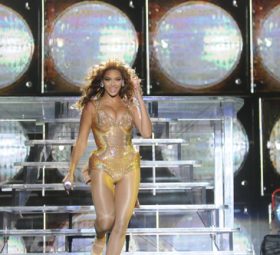
The Hip-Hop genre emerged as a lifestyle and an essential part of black and brown culture as a movement of self-expression and self-identity. Today, we know Hip-Hop as that multi-billion dollar industry that has bled other subgenres into other music styles. Hip-Hop is everywhere, even in the most acclaimed pop musical anthem chopping the charts.
However, to highlight how influential Hip-Hop music has become today, it is important to revisit its history.
It all began in the dilapidated streets of The Bronx, New York.
EARLY HISTORY
It was the early 1970s in the Bronx, a time of political, social, and economic uncertainty. Rising crime, gang violence, and increasing poverty were plaguing the streets, causing the white middle class to move to the suburbs and further segregate black and brown communities. The American Civil Rights movement was also at its peak, with black leaders like Malcolm X and Martin Luther King Jr. leading Calgary against segregation and racial division.
In response, the youth turned to the streets for self-expression and entertainment. Block parties were prevalent and laid the groundwork for the early steps of the Hip-Hop genre.
The rise of Hip-Hop started with members of a community congregating in mutual solidarity around sound systems influenced by Jamaican music and Reggae.
This new style of entertainment was fueled by anger and discontent with the socio-political structure that created racial barriers and class division but also provided a conduit to deal with the rising violence tormenting the city.
THE MAIN PILLARS OF HIP-HOP
The musical genre started with four mainstays:
- Djing and Turntabling
- MCing
- B-boying or breaking
- Graffiti or visual art.
These four elements began a culture in marginalized communities and brought excitement in an otherwise troubling time for people of color. However, these pillars were introduced by pioneers of the Hip-Hop genre and constitute how modern Hip-Hop songs are developed.
HIP-HOP’S PIONEERS
The first people to dip their toes in the creation of Hip-Hop music are known today as the “Holy Trinity of Hip-Hop”. These three men created, innovated, expanded, and introduced their community to their forms of expression, thus launching a global movement that is still alive today.
DJ Kool Herc, considered the father of Hip-Hop music. Afrika Bambaata, who formed Universal Zulu Nation and introduced the TR-808 machine, and Grandmaster Flash, who founded Grandmaster Flash and the Furious Five, the first Hip-Hop group to make it to the Rock and Roll Hall of Fame.
THE GOLDEN AGE OF HIP-HOP
It wasn’t until 1986 that Hip-Hop started making its way into the mainstream. The golden age of Hip-Hop lasted eleven years, and it was a time of critical innovation and complexity. Rolling Stones deemed the golden age of Hip-Hop as a time when every new single “reinvented” the genre and propelled Hip-Hop fashion and street slang into everyone’s daily lives.
It was also a time when sampling laws were nonexistent and Hip-Hop artists took the liberty of sampling from jazz, rock, soul, and even movies, like the Wu-Tang Clan sampling from Kung Fu Films.
Some crucial influences of that time were: Run-DMC, The Beastie Boys, Tupac, The Notorious B.I.G, LL Cool J, and Public Enemy.
THE DEATH OF THE GREATS
The Bling Era emerged after the deaths of Hip-Hop legends Notorious B.I.G. and Tupac. Bad Boy Records, propelled by Puff Daddy, was founded, and it was a notable time when Hip-Hop introduced R&B hooks into their music and found its way into mainstream Pop music, like Destiny’s Child and Ashanti.
It was also the era when Eminem released The Slim Shady LP and wowed the industry with its huge sales and popularity. Some notable characters from the Bling Era are Jay Z, Puff Daddy, Nelly, Ja Rule, 50 Cent, Snoop Dogg, and Birdman.
THE INTERNET ERA
After 2007, when internet usage became much more prominent, Hip-Hop music sales plummeted a shocking 44%, and no rap albums were among the top ten seller lists.
It was a difficult time that forced reinvention and innovation again, and the introduction of Auto-Tune and electronic music influenced the genre. However, Hip-Hop music was not dead. The Black Eyed Peas, Rick Ross, Kanye West, Kid Cudi, Drake, B.o.B, T-Pain, Lil Wayne, and Lupe Fiasco took center stage with their crowd-pleasing songs and musical genius
HIP-HOP TODAY
Currently, Hip-Hop music is still heavily influenced by internet culture; however, present-day Hip-Hop is notable for the rise of trap music and SoundCloud rappers. Pop stars like Katy Perry and Beyonce have experimented with the Trap subgenre. New, talented artists started emerging in the movement, like Lil Nas X, XXXTentacion, Kodak Black, and Young Thug.
It is also a time when female Hip-Hop artists, like Megan Thee Stallion, Nicki Minaj, Cardi B, Doja Cat, and Iggy Azalea, are some of the most influential people in the industry.
As of 2017, Hip-Hop is now the most popular music genre in the world, surpassing rock and pop music.
It’s safe to say that Hip-Hop music has evolved and reinvented itself. From its start at block parties and basements to stadiums and concert venues, Hip-Hop is a lucrative music business that once drew influences from other types of music but now outsells in the charts.
What started as a self-expression and political discontent movement has evolved into a musical powerhouse and cultural phenomenon. Hip-Hop history made its way from the streets of the Bronx to the entire world.





